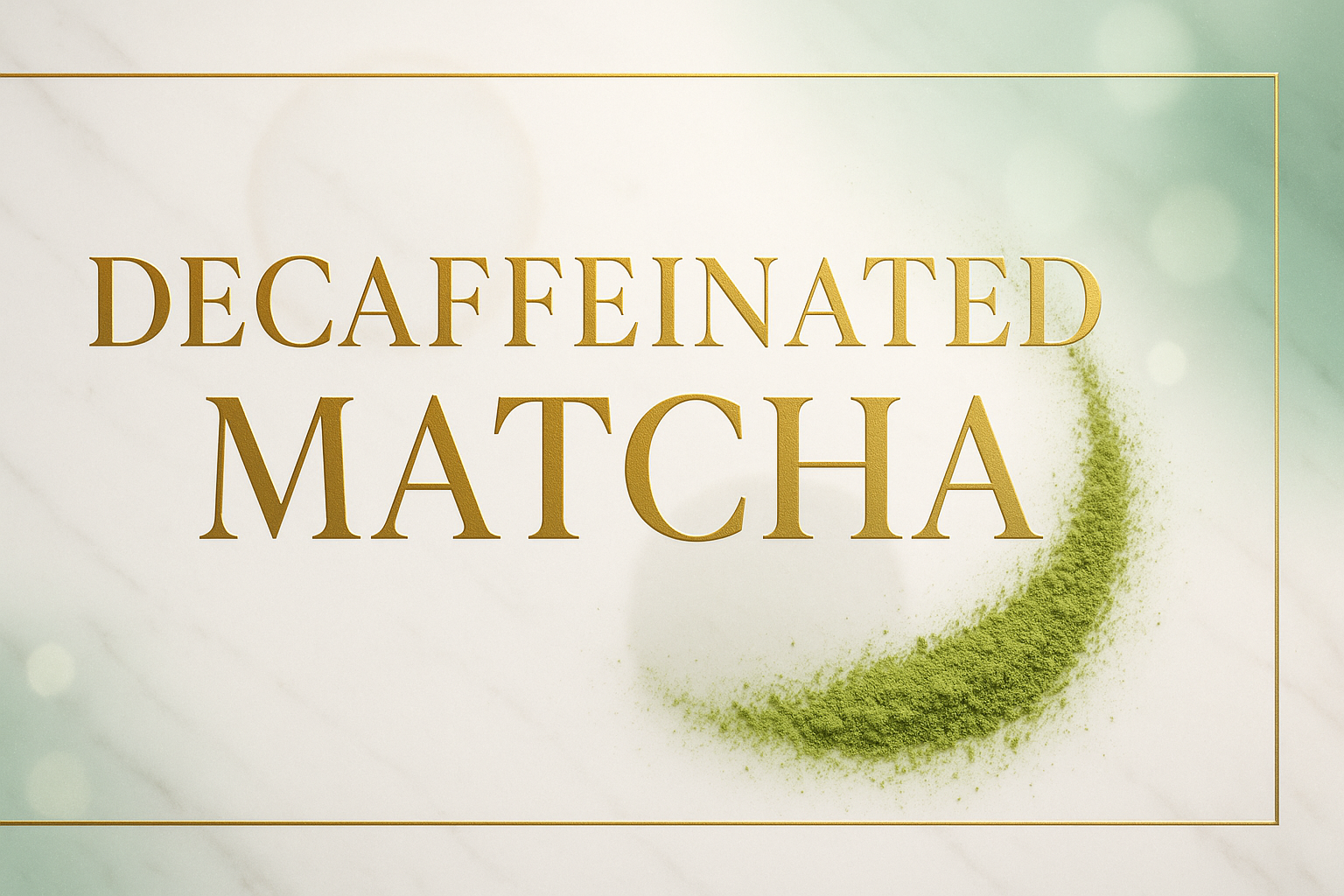Ever wondered about decaf matcha? It’s a special green tea powder from the same Camellia sinensis plant as regular matcha. The key difference is that a special process gently removes most of the caffeine. This is great news for anyone who is sensitive to caffeine but still wants to enjoy matcha’s unique flavor and amazing health benefits. While it’s not 100% caffeine-free, the amount left is tiny. Think of it like decaf coffee—you get the whole experience without the buzz. It’s the perfect choice for a relaxing evening drink!
- How Is Matcha Decaffeinated? A Look at the Methods
- The Surprising Health Benefits of Decaf Matcha
- Decaf vs. Regular Matcha: How Do They Compare?
- Does Decaffeinated Matcha Still Have Antioxidants?
- Potential Downsides: What to Know
- How to Choose a High-Quality Decaf Matcha
- A Guide to Taste: What Does Decaf Matcha Taste Like?
- Creative Ways to Use Decaf Matcha
- Our Top Picks: The Best Decaf Matcha Brands
How Is Matcha Decaffeinated? A Look at the Methods
Removing caffeine from delicate tea leaves has to be done carefully to protect the flavor and nutrients. One of the best methods is supercritical carbon dioxide (CO2) extraction. It sounds complicated, but it’s a clever way to use CO2 under pressure to selectively pull out caffeine molecules, leaving all the good stuff behind. Since it doesn’t use harsh chemicals, it’s very safe and effective. Another great method is water processing. The tea leaves are soaked in water, which pulls out the caffeine. This water is then passed through a carbon filter that traps the caffeine. The fresh, caffeine-free water is then returned to the leaves so they can reabsorb their natural flavors. Both methods are popular because they keep the matcha’s quality high.
The Surprising Health Benefits of Decaf Matcha
The best part about decaf matcha? You can enjoy it without caffeine’s side effects, like feeling jittery or anxious. This can lead to better sleep, especially if you love a cup of tea in the afternoon or evening. Decaf matcha offers a calming alternative, letting you unwind with a warm, soothing drink. You still get many of matcha’s wonderful benefits, including compounds that help you feel relaxed and focused. It’s the perfect way to enjoy the ritual of making and drinking matcha any time of day, without worrying about being up all night.
Decaf vs. Regular Matcha: How Do They Compare?
When you put decaf and regular matcha side-by-side, their nutritional content is remarkably similar. The main difference, of course, is the caffeine. A key compound in matcha is L-theanine, an amino acid that helps create that feeling of calm focus. High-quality decaffeination methods, like CO2 extraction, are designed to keep almost all the L-theanine. There might be a tiny reduction, but the difference is small. The same goes for other nutrients like vitamins and minerals. A well-made decaf matcha is still a super healthy drink, packed with most of the goodness that makes matcha so special.
Does Decaffeinated Matcha Still Have Antioxidants?
Yes, absolutely! One of the biggest reasons people love matcha is its high level of antioxidants, which help protect your body. The most famous antioxidants in matcha are catechins, especially EGCG. It’s a valid concern to wonder if the decaf version still has them. The good news is that decaf matcha keeps a very high level of these powerful compounds. While the process might slightly reduce the amount, modern, gentle methods ensure that you’re still getting a rich dose of antioxidants in every cup.
Potential Downsides: What to Know
While decaf matcha is a fantastic option, there are a few things to keep in mind. The taste can be a little different from regular matcha. Some people find it milder and less bitter, with a softer “umami” flavor. This is because removing caffeine can also affect some of the compounds that create its complex taste. Another factor is cost. The extra steps needed to make matcha decaf mean it’s usually more expensive. Finally, it can be harder to find. You might have to look in specialty tea shops or online to find a great selection.
How to Choose a High-Quality Decaf Matcha
Want to make sure you’re buying the best? First, check the decaffeination method. Look for brands that proudly mention they use CO2 extraction or water processing. You can usually find this on their website or the package. Second, look at the origin. Matcha from Japan, especially from famous regions like Uji or Nishio, is a sign of great quality. Color is another big clue. High-quality decaf matcha should be a vibrant, bright green. A dull or yellowish color can mean it’s lower quality or old. Lastly, look for certifications like USDA Organic or JAS (Japanese Agricultural Standard) for extra peace of mind.
A Guide to Taste: What Does Decaf Matcha Taste Like?
So, what does it taste like? Decaf matcha is very similar to regular matcha but often smoother and gentler. You’ll still get those lovely grassy notes, but with less bitterness. This can actually make it more enjoyable for people who are new to matcha! The rich, savory “umami” flavor might also be a bit softer. The overall taste is clean, mellow, and easy to drink. For many, this slightly softer flavor is a perfect trade-off for enjoying matcha without caffeine. It works wonderfully in lattes, where it blends beautifully with milk.
Creative Ways to Use Decaf Matcha
Decaf matcha is incredibly versatile! You can use it in all the same ways as regular matcha. The classic way is to whisk it with hot water for a simple, beautiful tea. It also makes a delicious and creamy matcha latte with steamed milk (or oat and almond milk). But don’t stop at drinks! Add a spoonful to your morning smoothie for an antioxidant boost. It’s also a fantastic ingredient in baking—try it in cookies, cakes, or muffins for a gorgeous green color and a sophisticated tea flavor. You can even mix it into yogurt or sprinkle it over your oatmeal.
Our Top Picks: The Best Decaf Matcha Brands
Looking for a brand you can trust? A few stand out for their quality. The Republic of Tea offers a decaf matcha known for its smooth taste and is easy to find. Another excellent choice is Naoki Matcha, a specialty brand focusing on high-quality matcha from Japan. They are very transparent about their process, and their decaf is highly rated. Jade Leaf Matcha is another popular, organic option that uses a water decaffeination process. They are known for their fresh flavor and bright color. Before you buy, it’s always a good idea to read recent reviews to see what other customers are saying.



